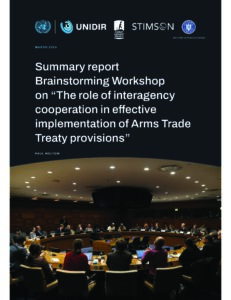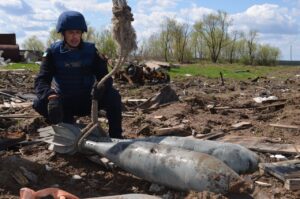Challenges to Implementing Control Regimes
Limited state capacity and bureaucratic “stove piping” are just some of the issues hampering global efforts to limit the spread of dangerous weapons and materials. Despite numerous conventions, resolutions, and other regimes in place that seek to prevent criminal trafficking and control cross-border movement of conventional arms and other goods, technologies, and services with both legitimate and potentially illegitimate end-uses, implementation of trade controls for arms and “dual-use” CBRN items remains uneven at best. This increases the risk and ease with which nefarious non-state actors and other criminals can acquire arms.
A New Analytical Approach
This project looks outside more typical comparisons within arms trade or crime control fields to identify options and approaches to facilitate and strengthen implementation through a cross-case comparison of the Arms Trade Treaty, the UN Convention on Transnational Organized Crime and its Protocols, and UN Security Council resolution 1540 (2004) and its family of resolutions. Stimson hypothesized that the diversity of these three sets of international legal instruments was more likely to generate a greater understanding of potential robust responses to common challenges than more narrow comparisons. With this new understanding, this project sought to provide more effective policy guidance to States and international and regional bodies on cross-cutting obligations and experiences in implementing trade control obligations.
What We Found
This study encompassed not just the three main legal instruments, but a wide range of implementing guidance and good practice documents on strategic trade controls and related topics from organizations as disparate as the World Customs Organization (WCO), the International Air Transport Association (IATA), the International Atomic Energy Agency (IAEA), and the World Health Organization (WHO). In some cases, the recommended good practices were found directly within the legal instrument itself. In most cases, however, the research team found the good practices by combing through the families of supporting resolutions, guidance documents, and implementation best practices that the UN and other international and multi-lateral institutions have developed over the years.
Eight Areas of Good Practice
The research team identified eight recommended good practices common to all three instruments: 1) physical security; 2) border controls; 3) multi-stakeholder partnerships; 4) interagency cooperation; 5) international cooperation; 6) record-keeping and use of information and communication technologies; 7) risk management; and 8) training. The recommendations are laid out in more detail in the “Guide to Good Practices,” also available for download. However, they should be understood as overall good practices that states should employ and adapt based on what makes sense for their particular situation.
Physical Security
Preventing proliferation of weapons and illicit materials starts with good security practices for the storage of items for legitimate trade and end-use.
Border Controls
States should ensure they have adequate measures in place to enable customs and other frontline officers to secure their borders against the illicit trade in arms and dual-use items.
Multistakeholder Partnerships
Given that key logistical assets, infrastructure, and expertise surrounding international trade are spread across a wide array of public and private sector entities, it is important for states to foster cooperation among all supply chain stakeholders.
Interagency Cooperation
Interagency cooperation at the national level is critical to effective implementation of each of the legal instruments under consideration in this study and to their integrated and efficient implementation.
International Cooperation
National governments are encouraged – and in some cases, legally required – to cooperate with one another on issues related to strategic trade controls.
Record Keeping and Use of Information and Communication Technology
Consistent record-keeping is critical to tracking shipments of restricted materials or dual-use goods and identifying trends and patterns.
Risk Management
Given that frontline officers must manage a wide range and variety of risks (including the smuggling of arms, nuclear materials, toxic waste, or WMD), risk management enables frontline officers to exercise adequate controls with minimum hindrance to legitimate trade.
Training
States should consistently provide a variety of training to frontline officers and, when possible, other relevant stakeholders on facilitating supply chain security, enabling verification, and identifying illicit, dual-use, and other controlled items of concern.



